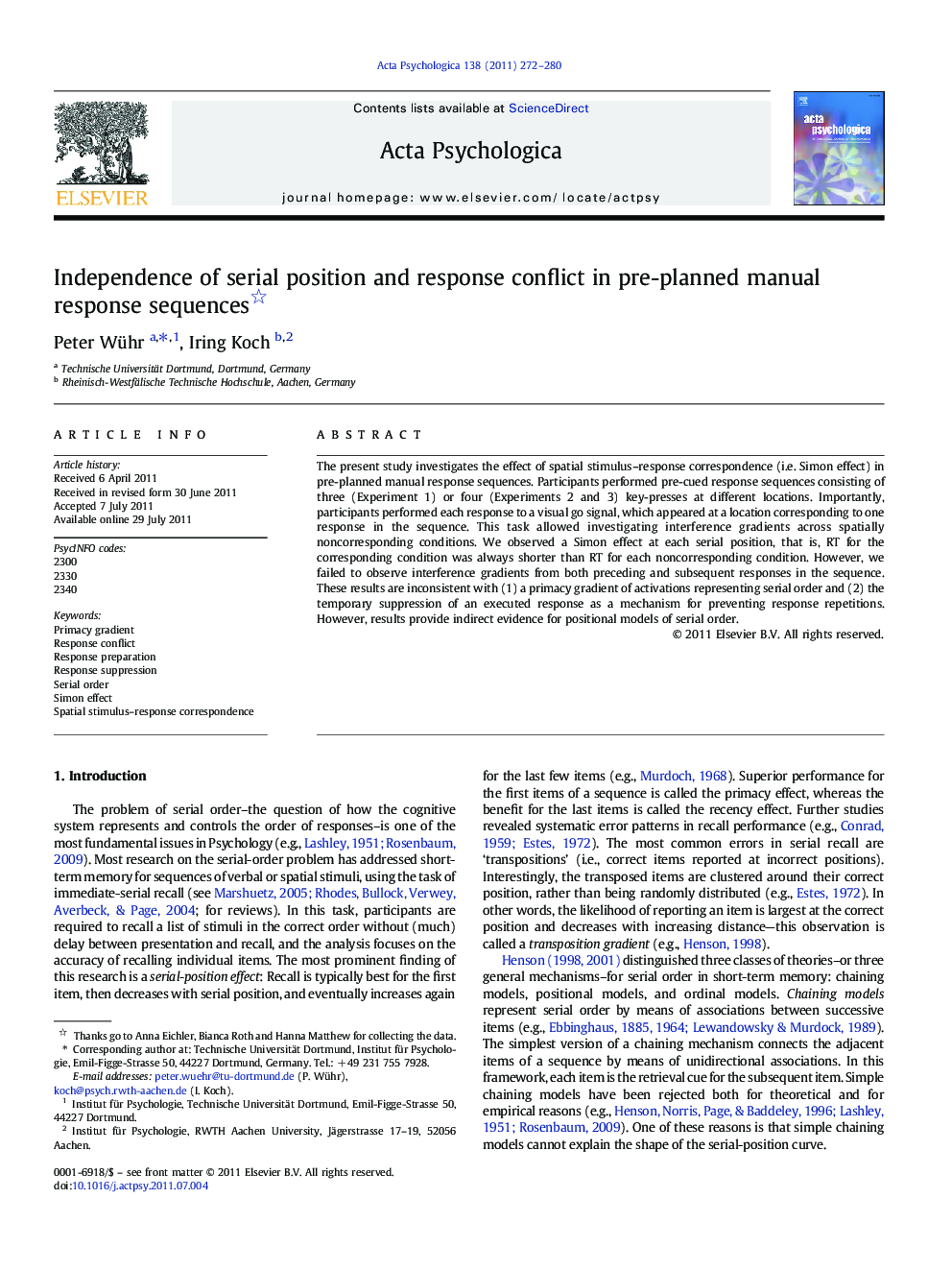| Article ID | Journal | Published Year | Pages | File Type |
|---|---|---|---|---|
| 920197 | Acta Psychologica | 2011 | 9 Pages |
The present study investigates the effect of spatial stimulus–response correspondence (i.e. Simon effect) in pre-planned manual response sequences. Participants performed pre-cued response sequences consisting of three (Experiment 1) or four (Experiments 2 and 3) key-presses at different locations. Importantly, participants performed each response to a visual go signal, which appeared at a location corresponding to one response in the sequence. This task allowed investigating interference gradients across spatially noncorresponding conditions. We observed a Simon effect at each serial position, that is, RT for the corresponding condition was always shorter than RT for each noncorresponding condition. However, we failed to observe interference gradients from both preceding and subsequent responses in the sequence. These results are inconsistent with (1) a primacy gradient of activations representing serial order and (2) the temporary suppression of an executed response as a mechanism for preventing response repetitions. However, results provide indirect evidence for positional models of serial order.
► We investigated effects of spatial S–R correspondence in manual response sequences. ► Simon effects occurred for each response in pre-planned sequences of four responses. ► Response conflict was independent of distance in serial position. ► Results failed to provide evidence for activation gradients across response codes.
